Best Gochujang Substitutes (Korean Chili Paste)
Need a good gochujang substitute? Whether you don’t have it on hand, or can’t find it at the store, try one of these gochujang alternatives instead.
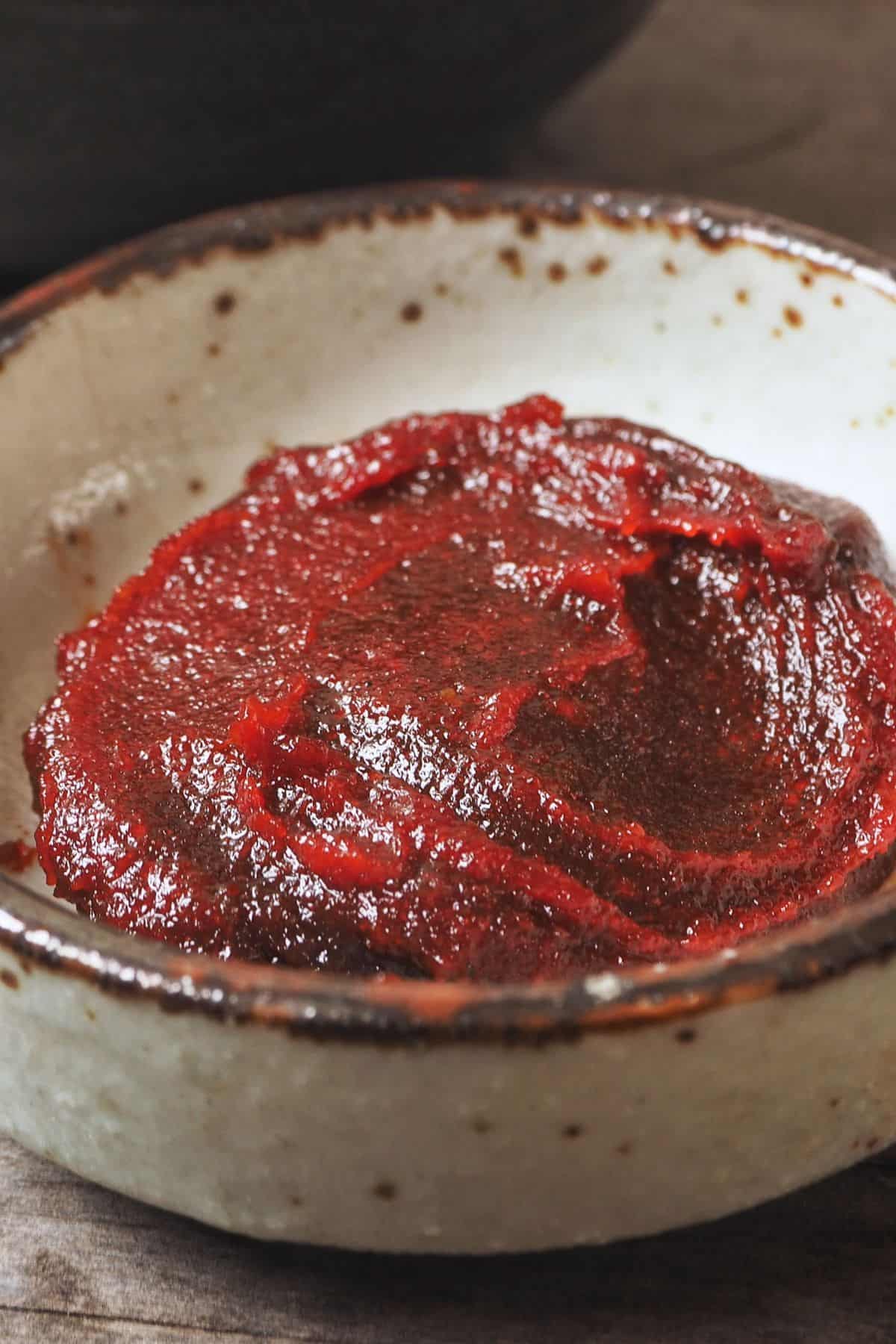
What is Gochujang?
Gochujang is a spicy fermented Korean chili paste with a unique flavor. It’s thick, dark red, and has a savory, spicy, funky, salty taste with a subtle sweetness.
The main ingredients in gochujang are
- Gochugaru – Korean chili powder. Finely ground gochugaru chili flakes are used for paste, whereas more coarsely ground gochugaru is used for kimchi.
- Glutinous rice powder – despite the name, this is completely gluten-free.
- Fermented soybean powder.
- Salt.
Additional ingredients:
- Sugar – a small amount of tapioca syrup, corn syrup, or granulated sugar helps balance out the flavors.
- Garlic powder – for extra flavor.
- Flour as a thickening agent – many brands use wheat flour or barley malt powder, but some brands use rice flour to make it gluten-free.
During the fermentation process, the starches in the rice convert to sugars, which is where the subtle sweetness comes from, the red chili peppers provide the heat and smokiness, and the fermented soybeans act similarly to miso giving it that umami flavor.
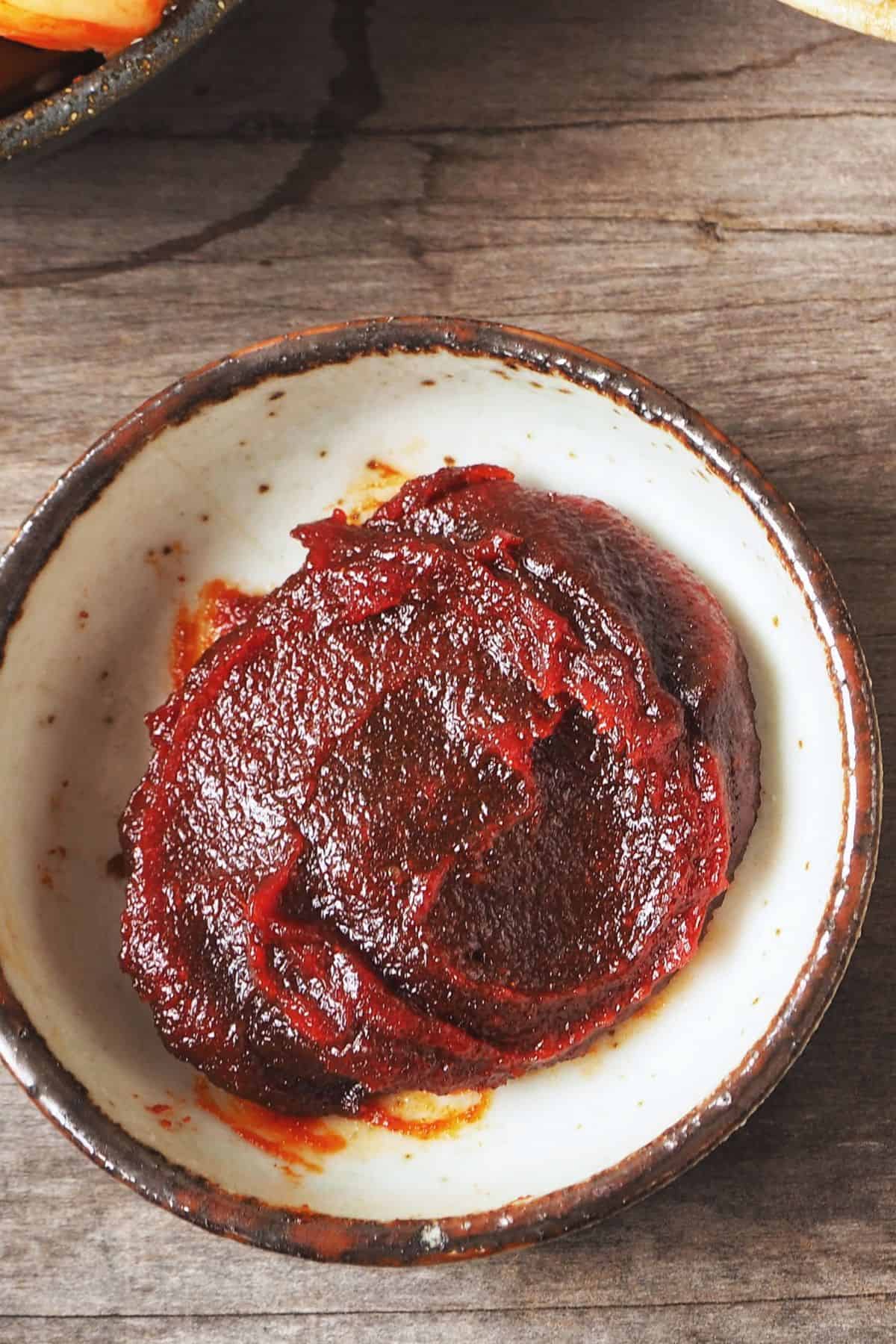
Is Gochujang Really Spicy?
Heat levels can vary from brand to brand. Typically, the packaging will indicate the level of the spiciness ranging from mild to medium hot to extra spicy.
Gochujang isn’t a stand-alone ingredient though. Because it has a very concentrated flavor, this Korean condiment is meant to be used in dishes with other ingredients to add depth of flavor. You can always add more as needed, but a little goes a long way.
Where To Find It?
You can find gochujang in the condiment aisle at your local Asian market, at local supermarkets, or on Amazon. Most of the gochujang sold in grocery stores is not gluten-free. For gluten-free gochujang paste, I love this brand.
Best Substitutes For Gochujang
1. White Miso Paste + Gochugaru (Korean Chili Powder)
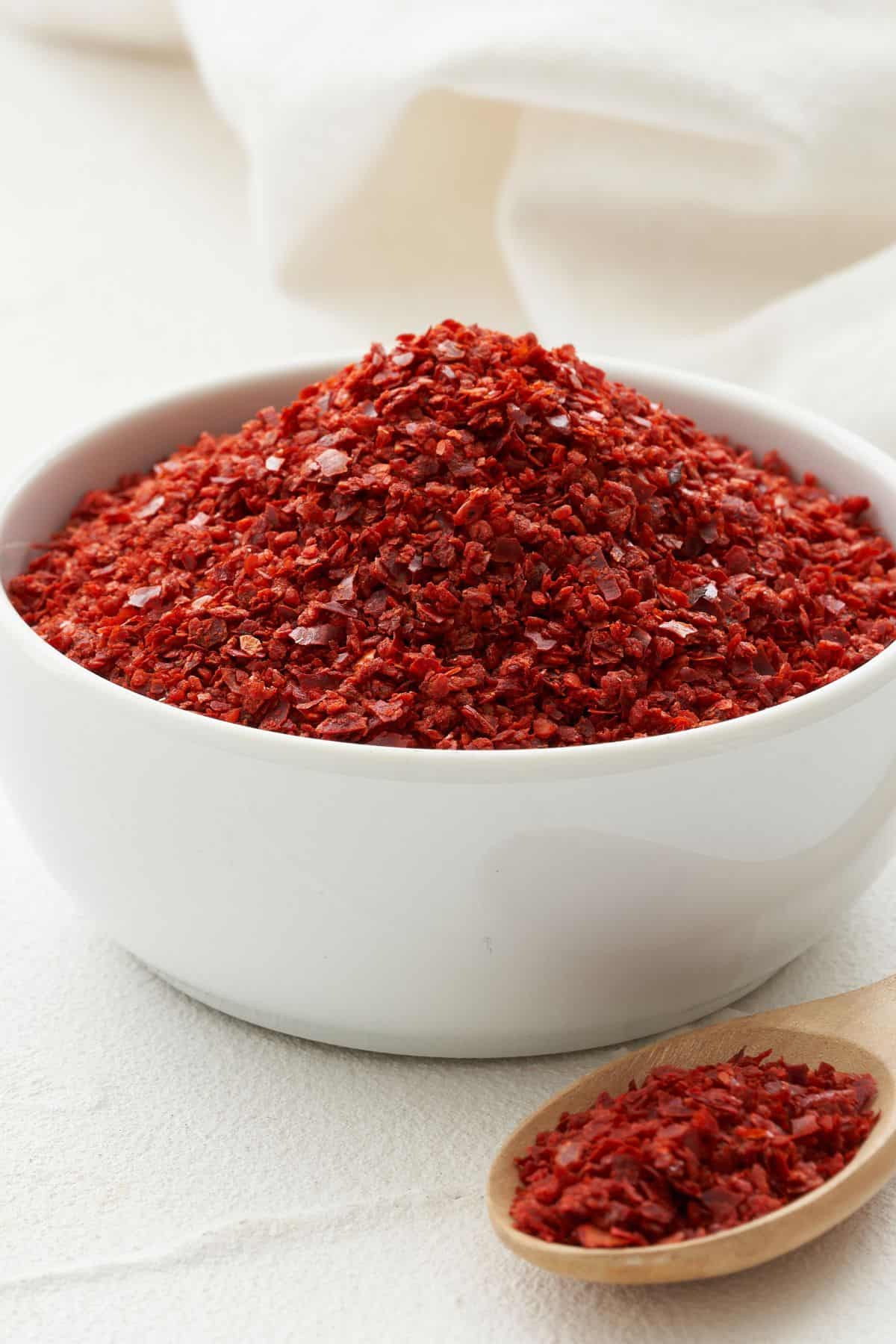
A good substitute for gochujang paste is to make homemade gochujang using white miso paste, gochugaru, maple syrup, soy sauce/tamari, and garlic powder. These ingredients will replicate a similar texture and flavor profile.
To make this substitute, use equal parts of miso paste and finely ground gochugaru with a small amount of maple syrup, soy sauce/tamari, and garlic powder.
If you can’t easily find gochugaru or you don’t want to make an extra trip to the store, you can also use another ground chili powder such as cayenne pepper.
Allergens: Use gluten-free miso paste and tamari to keep it gluten-free.
2. Ssamjang
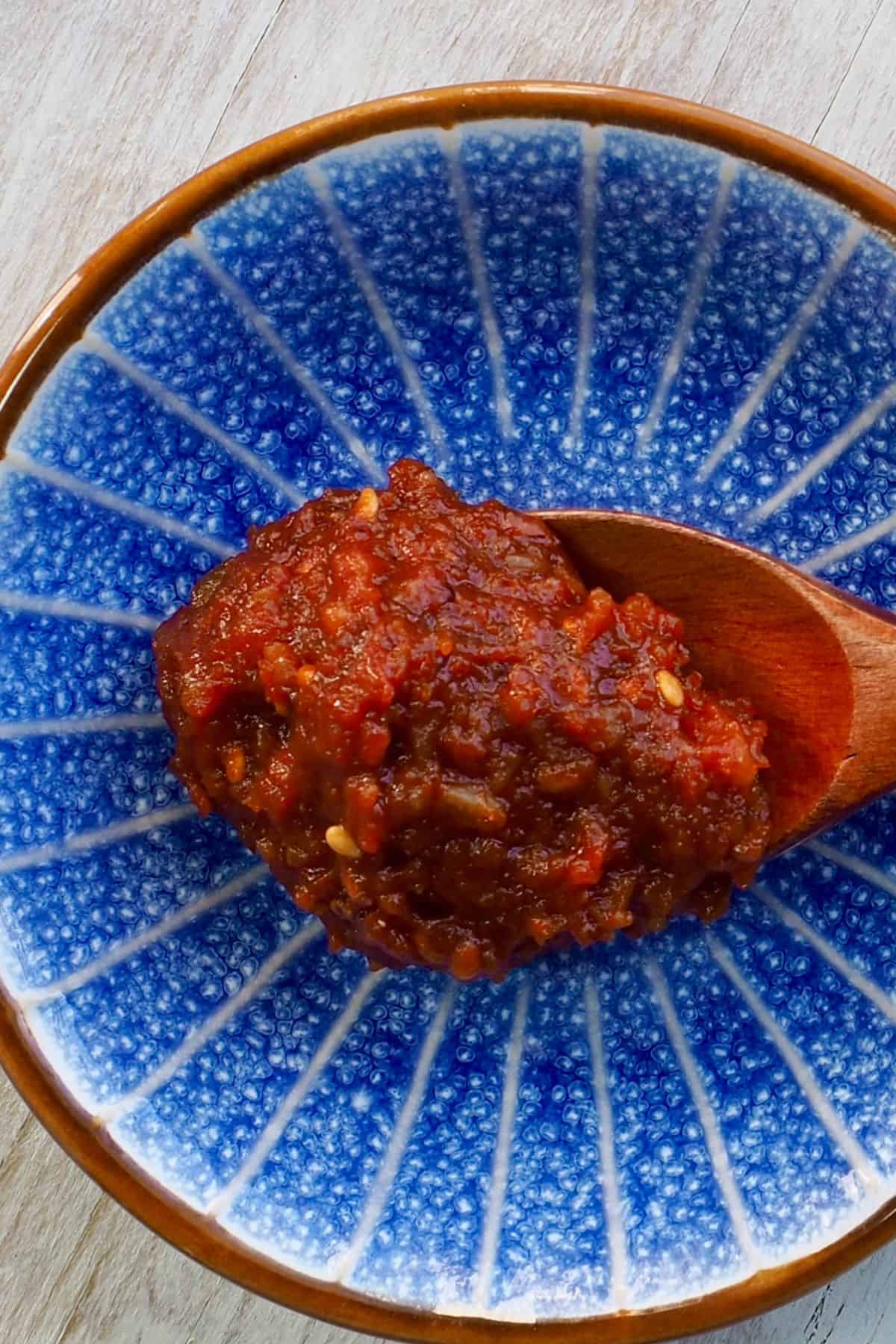
Ssamjang is another thick, red Korean condiment often used as a dipping sauce in Korean cuisine, though it’s not as spicy as gochujang paste. It’s made with gochujang paste, fermented soybeans (doenjang), sesame oil, onion, garlic, green onions, and sometimes brown sugar.
Allergens: Ssamjang isn’t a good option for gluten-free eaters as it’s made with wheat flour.
3. Sriracha
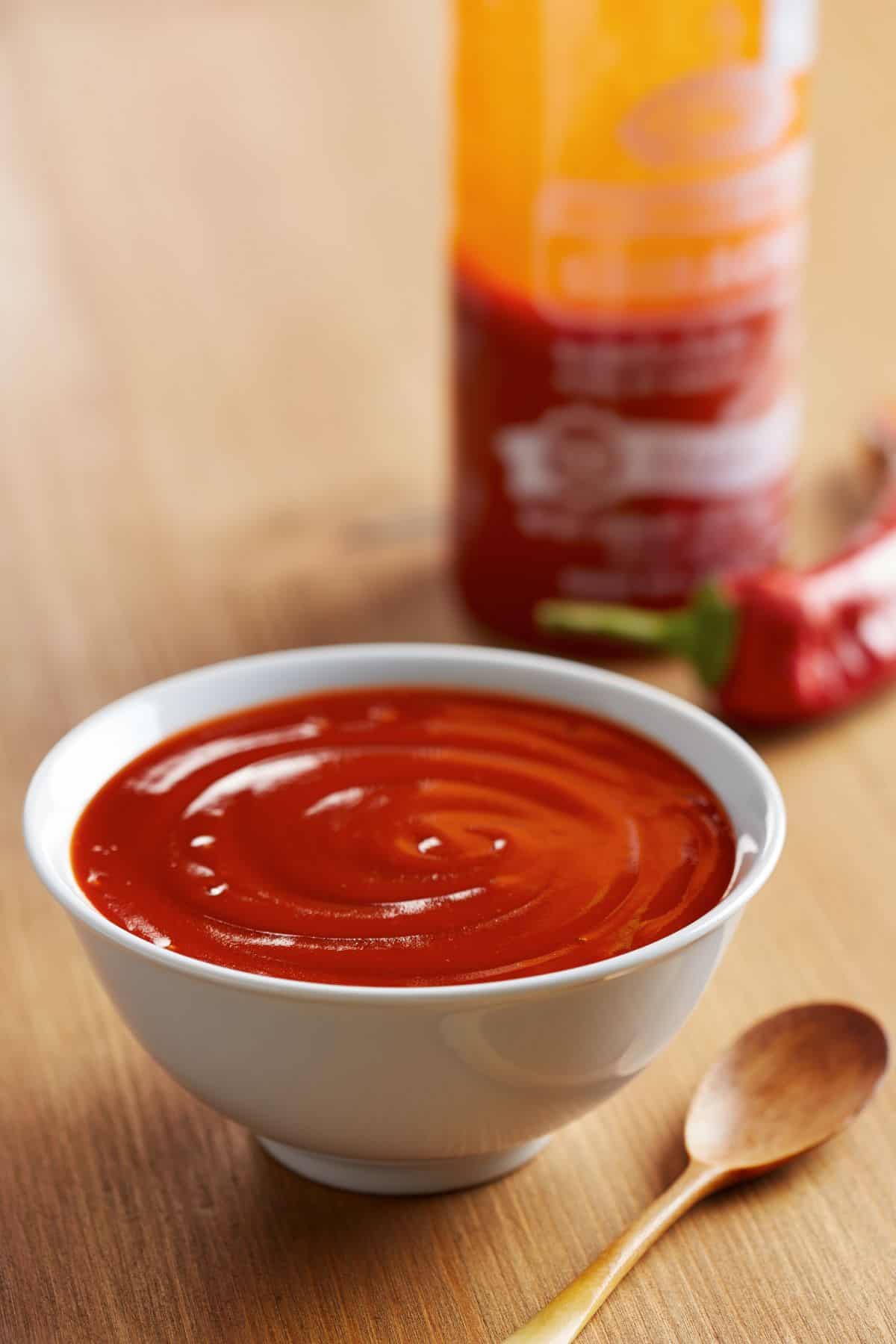
Sriracha is a great gochujang substitute because it’s a condiment that many people already have on hand. This slightly sweet and spicy fermented hot sauce from Thailand is made with chili, sugar, salt, garlic, and vinegar.
It has a similar spicy flavor to gochujang but is much thinner. To give it a similar consistency, you can add a spoonful of miso paste to thicken it up.
4. Sambal Oelek + Miso Paste + Maple Syrup
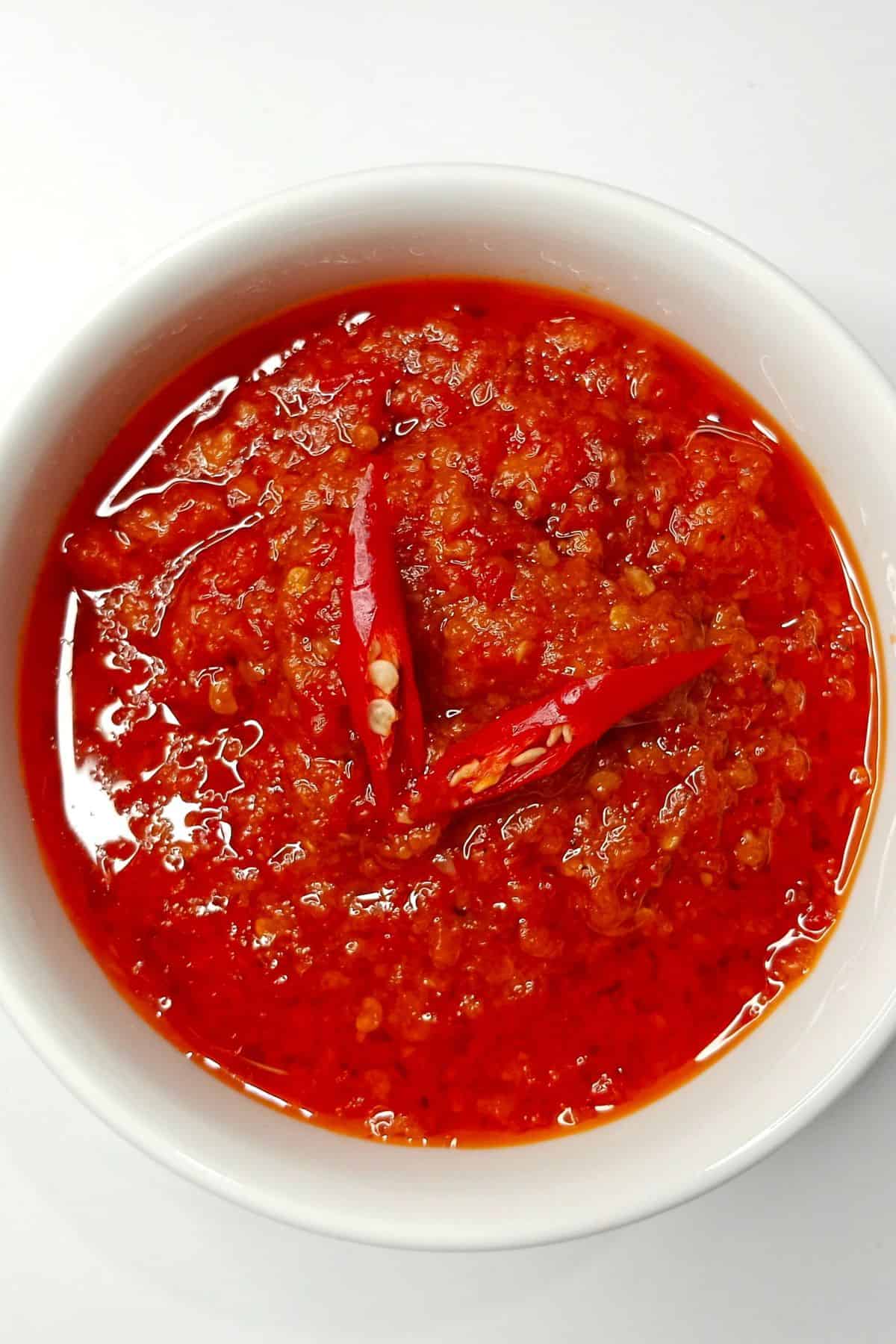
Sambal Oelek is an Indonesian chili paste. It has chili peppers, shrimp paste, garlic, ginger, shallot, scallion, palm sugar, and lime juice.
To give it a more complex flavor, mix it with miso paste and a splash of maple syrup (or a pinch of sugar).
Allergens: sambal oelek is made with shellfish.
5. Tomato Paste
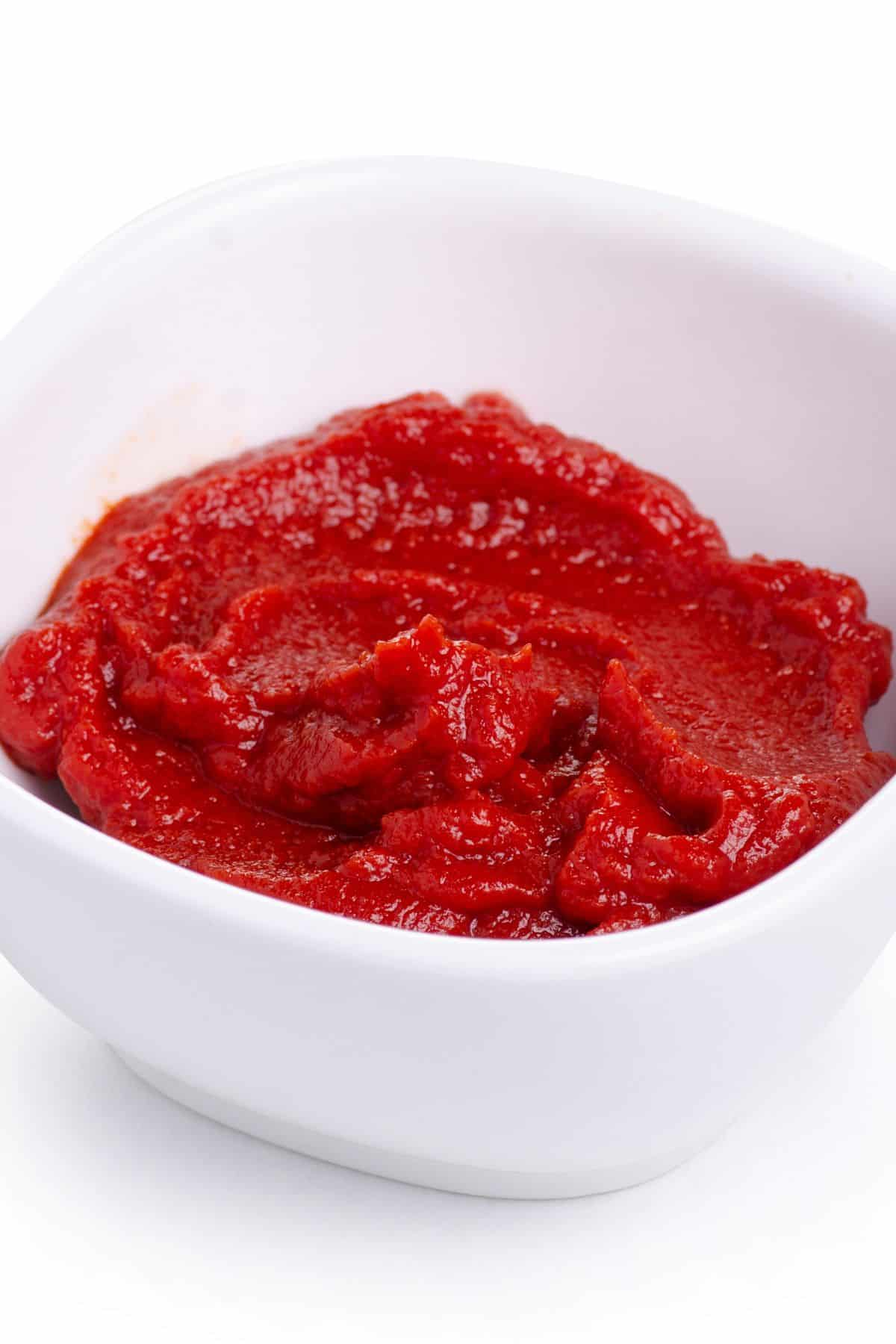
The only similarities between tomato paste and gochujang paste are the texture and color. Tomato paste is slightly sweet and acidic, but otherwise, they’re completely different.
Tomato paste is another pantry staple you likely have on hand and can work in a pinch. To give it a more complex flavor similar to gochujang, you need to add a few more ingredients to mimic those flavors.
Mix tomato paste with a splash of soy sauce or tamari, some type of chili powder (such as cayenne powder or gochugaru), garlic powder, and a tiny pinch of sugar.
Frequently Asked Questions
Most gochujang is processed with wheat flour or barley malt flour, making it not gluten-free. However, some brands such as Chung Jung One and Sempio are gluten-free. Check the label and the ingredient list on the package to make sure.
Yes, gochujang is vegan. It’s made with a mixture of Korean chili powder, glutinous rice powder, fermented soybean powder, and salt.

